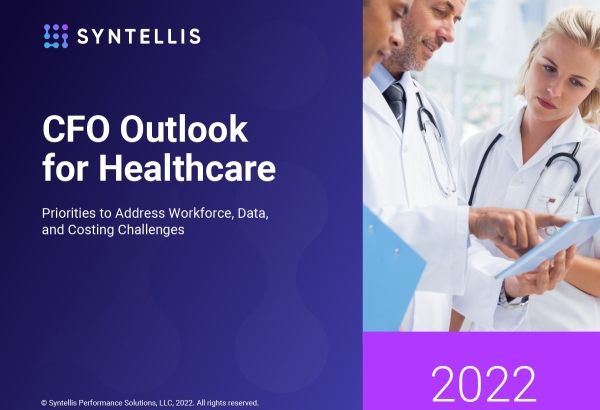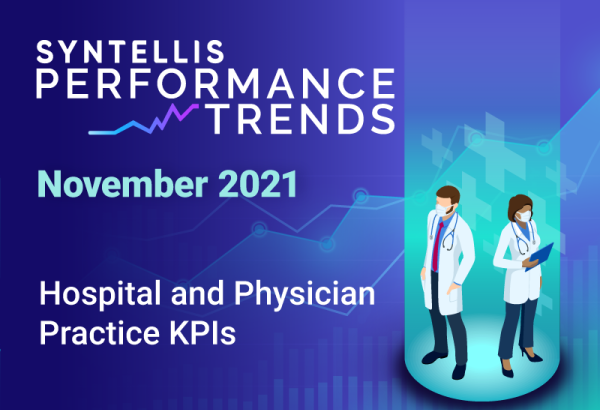The demands of the pandemic over the past two years have driven many healthcare organizations to improve agility of their care delivery models, planning and budgeting processes, and overall approach to serving patients. This presents a significant challenge around controlling costs and regaining stable financial ground lost since the pandemic began.
To address this, we see an increasing need for technology that powers strategic decision-making with accurate, timely, integrated data. Below, we discuss six prominent shifts in the healthcare landscape and how technology can help you address the evolving trends.
1. Expanding points of service
In recent years, care delivery has shifted out of the hospital's four walls and into other points of service, including medical office buildings, same-day surgery centers, radiology centers, etc. The COVID-19 pandemic accelerated this shift as many patients elected to seek care outside of the hospital setting, forcing organizations to understand financial and operational metrics that can help optimize service mix by location.
To address this shift and plan for the future, finance leaders need technology and tools to help model and identify the impacts of adding new services, bringing on new physicians, or opening a new facility. A recent Syntellis report revealed that 46% of healthcare leaders plan to invest in predictive analytics, 25% will invest in artificial intelligence (AI), and 24% will increase use of machine learning (ML) over the next 12-18 months. Equally important is the need for data and ecosystem integrations that ensure all organizational leaders use a single source of truth, resulting in more accurate and efficient forecasting and planning.
2. Price transparency
Price transparency is no longer just an industry buzzword. Effective in 2021, hospitals are required to publish their prices for top services, giving access to both government organizations and the general public. This allows consumers to compare prices and shop for services, putting hospitals and health systems in a tight spot if their pricing analysis capabilities aren’t up to par.
Healthcare organizations can leverage transparency as a competitive advantage with the assistance of technology. Seek out a solution that models the impacts of service pricing, provides comparative data for pricing competitiveness, and integrates quality outcomes for more comprehensive pricing.
3. Digital transformation
Due to a seemingly overnight cancellation of non-urgent, in-person appointments, the use of telehealth accelerated exponentially during COVID-19: 46% of patients now use telehealth, up from 11% in 2019, according to McKinsey. We expect the number to continue rising, which presents a unique opportunity for organizations to innovate and evolve alongside patient demands. It also presents a challenge when planning ahead and trying to control costs. Cost control and cash management continue to be top of mind as healthcare organizations navigate the volatile impacts of the pandemic.
As a result, healthcare organizations should prioritize access to data that supports both agility and planning — no longer mutually exclusive. For example, comparative insights across the care continuum can provide the context needed to manage the entire healthcare environment, not just what takes place within the hospital’s walls. Dashboards and key performance indicators (KPIs) can help assess opportunities and cash positions. Organizations must also start thinking about short-term volume projects to ensure optimal staffing levels as the pandemic’s trajectory remains uncertain.
4. Value-based care
The growing demand for value in healthcare — better care, smarter spending, healthier communities — continues to be a driving force that changes the financial landscape for healthcare organizations. In 2019 more than 30% of all healthcare payments in the U.S. were the result of a value-based payment program, up from 23% in 2015, with every reason to believe that trajectory will continue.
The impact of patient outcomes on cost and reimbursement raises the need for transparency of patient quality and safety. For example, on any given day, about one in 25 hospital patients has at least one healthcare-associated infection. The average added cost to the provider for a preventable event, such as a central line blood stream infection is over $48,000 per case. Not only does this impact cost and resource utilization, but when these events exceed benchmark thresholds negotiated as part of the payer contract, payment penalties are incurred. HAIs are publicly reported through CMS and organizations like Leap Frog, increasing consumer visibility and potentially effecting loyalty and revenue.
Hospitals and health systems should leverage technology that analyzes clinical and operational data to help leaders understand the impact of clinical decisions on cost, quality, and revenue. Traditional cost accounting systems look at cost and revenue without regard for quality or outcome. Instead, a cost accounting system should be a component of a comprehensive enterprise decision support solution that reflects the relationship between outcome and profit.
5. Population health
As the population ages and chronic conditions increase, so does healthcare spending. The need to improve patient health and wellness, address gaps in care, manage chronic disease, and lower spending requires the shared clinical and financial accountability of providers and payers alike.
The introduction of Advanced Payment Models such as Medicare Advantage programs require provider-sponsored health plans to take responsibility for a specific subset of Medicare patients. Plans measure quality of care in multiple domains like care coordination, experience, and preventive health to better understand and manage disease risk. An emphasis on social determinants of health helps to mitigate barriers to accessing preventative care in marginalized populations. For example, many screening rates, such as those for cancer, are below desired levels and reflect disparities across ethnicity/race.
To achieve and document success of population health programs, organizations need access to a broader set of data — claims and member data, for example — for a more comprehensive view of an individual’s activity. This integrated data can then be leveraged to deliver opportunity analysis for efficient care and use of low-cost settings, ultimately protecting your bottom line.
6. Dynamic planning
Often, by the time the budget is created and receives board approval, it is obsolete and no longer accurate. Although we don’t expect the traditional 12-month budget to disappear completely anytime soon, healthcare leaders are adopting more concurrent planning tools, such as rolling forecasting. The 2022 CFO Outlook for Healthcare report revealed that 40% use rolling forecasting to complement an annual budget, and 15% use it as a replacement to traditional budgeting.
A more dynamic approach to planning requires integrated data. Your planning solution should integrate rolling forecasts with long-term financial plans and operational budgets to support strategic and tactical planning success, comparing forecasts to established targets and KPIs.
Syntellis Axiom provides healthcare leaders with a unified technology platform that features enterprise planning and decision support capabilities as well as financial and clinical data analytics and benchmarking solutions to help propel organizations forward through a shifting landscape. Learn more about the Axiom Healthcare Suite.
You also might be interested...

2022 CFO Outlook for Healthcare

As Winter COVID Surge Arrives, Can Hospitals Account for the Labor Crisis?


